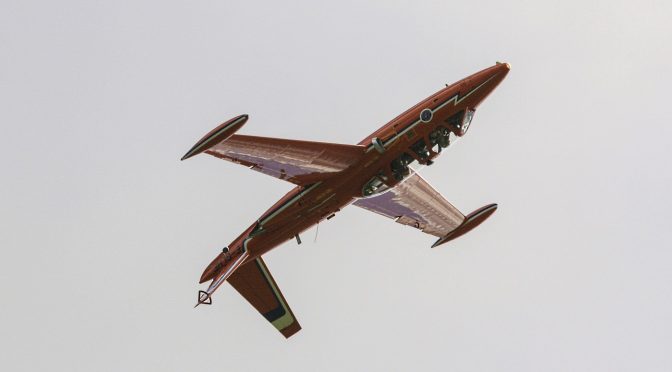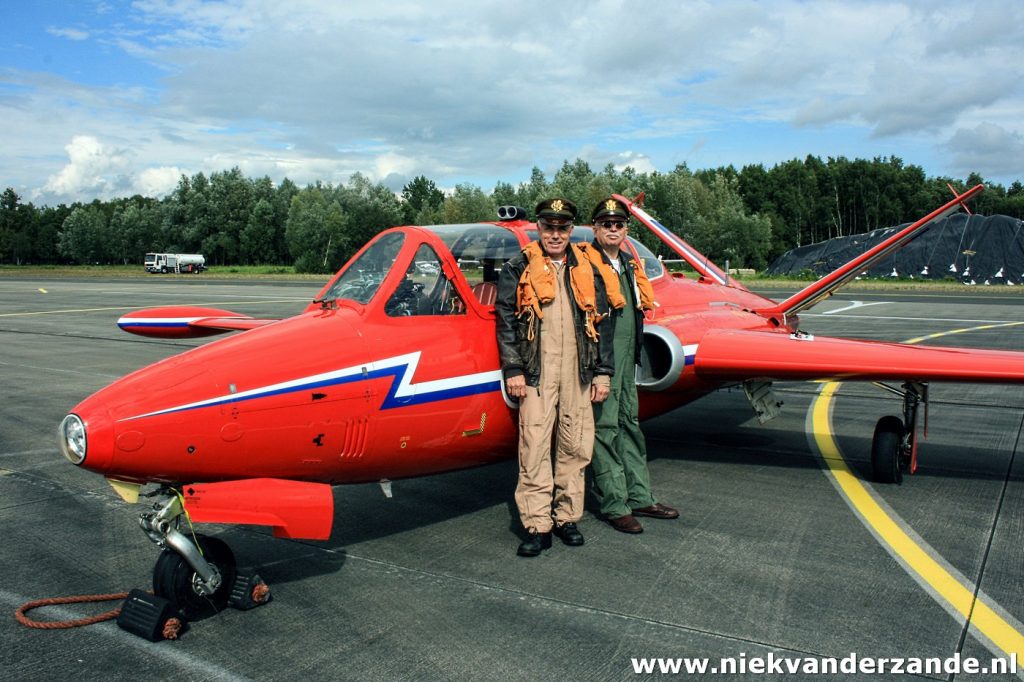During the Keep them Rolling anniversary event at Twente Airport one strange visitor arrived, that did not really fit in with the event. It was the Fouga Magister of the Dutch Historic Jet Association (DHJA), what did it do here?
Well, the answer was rather simple. The crew heard about the event and decided to have a look. Since the Fouga did not fit in with the event (it was buit after WW2), it was parked on the main platform of the airport and not with the event. The crew did however dress up for the occassion and perfectly blended in with the event.
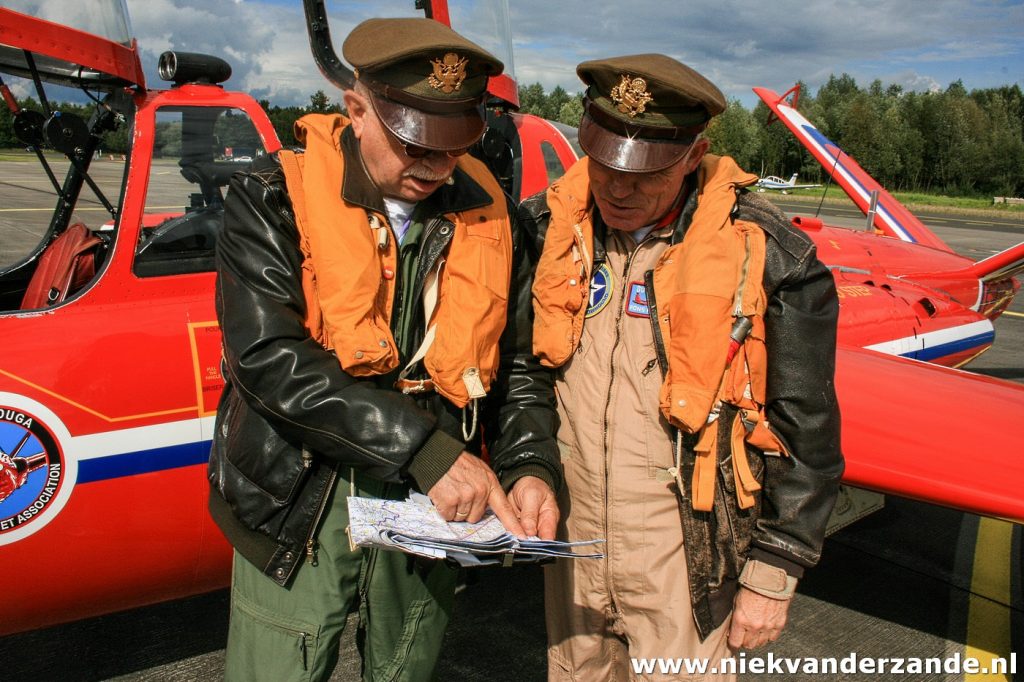
Later in the afternoon I was lucky enough to move to the main platform to take pictures of the Fouga. On this occassion I also met the pilots Fons Hemmelder and Gerhard Westerdijk, who flew here from Lelystad Airport. Both of them are former Koninlijke Luchtmacht pilots who later made the move to various airlines as captains. After their retirement they are now using their time to support the DHJA and fly the Fouga. Fons is very well known in the Dutch aviation scene (and abroad as well), as he was the NF-5 Solo Display pilot with Twenthe Airbase based 315 Squadron during 1981/1982. These skills come in very handy when displaying the Fouga during the various airshows. Gerhard used to fly the F-104G Starfighter with 322 Squadron, based at Leeuwarden.
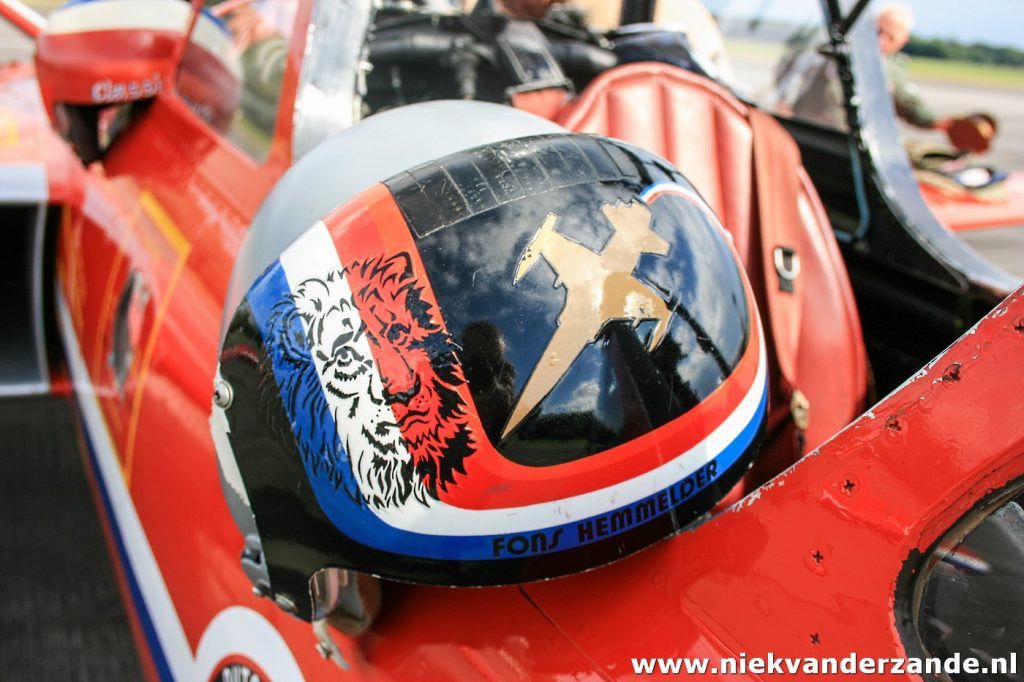
Both Gerhard and Fons receieved their initial jet training on the Fouga CM.170R Magister with the Belgian Air Force’s Voortgezette Vlieg Opleiding at Brustem. Here they both developed the love for this easy going whistle jet and they have been involved with the DHJA since its foundation in 1997.
The Fouga CM.170R Magister
The Fouga CM.170 Magister (and its navalised sister, the CM.175 Zephyr) was designed by Fouga’s engineersRobert Castello and Pierre Mauboisson. In 1948, development commenced at Fouga on a new primary trainer aircraft design that harnessed newly developed jet propulsion technology. The initial design was evaluated by the French Air Force (Armée de l’Air, AdA) and, in response to their determination that the aircraft lacked sufficient power for their requirements, was enlarged and adopted a pair of Turbomeca Marboré turbojet engines. First flying on 23 July 1952, the first production order for the type was received on 13 January 1954. Export orders for the Magister were received, which included arrangements to produce the type under license in Germany, Finland, and Israel. In addition, the related CM.175 Zéphyr was a carrier-capable version developed and produced for the French Navy.
While primarily operated as a trainer aircraft, the Magister was also frequently used in combat as a close air support platform by various operators. In the latter capacity, it saw action during the Six-Day War, the Salvadoran Civil War, the Western Sahara War, and the Congo Crisis. In French service, the Magister was eventually replaced by the Dassault/Dornier Alpha Jet. In total, 926 were built.
The Belgian Air Force operated 50 Magisters as primary trainers. The aerobatic team The Red Devils also used them as display aircraft. A small number of Magisters remained in use until September 2007, as flight maintenance aircraft for senior officers. The Belgian Air Force was the last country that used Magisters for full duty.
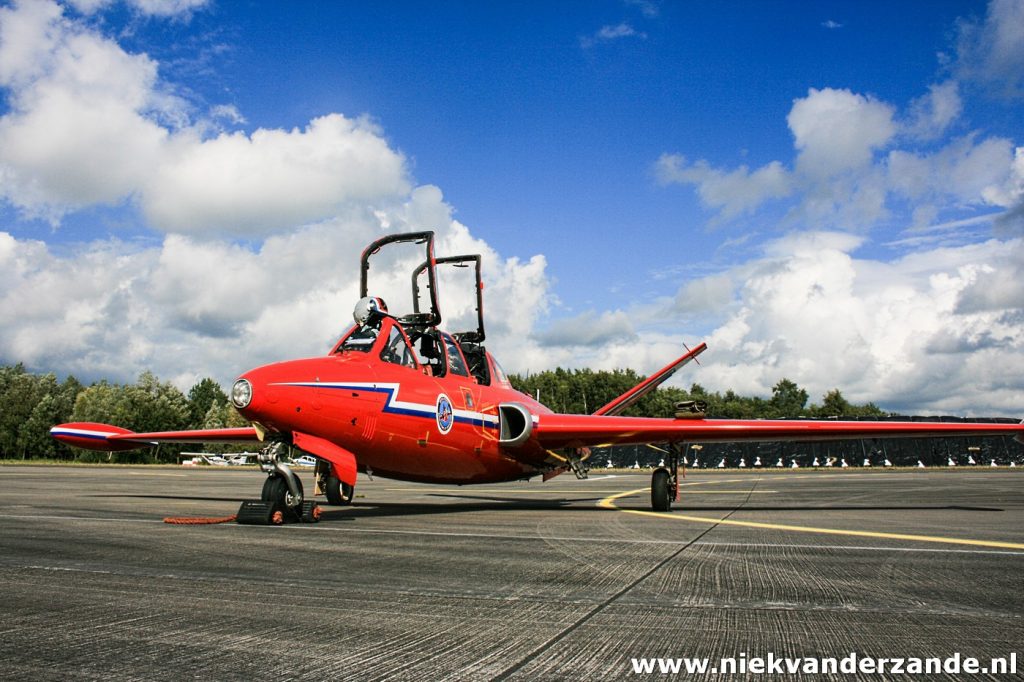
The Dutch Historic Jet Association currently owns two Fouga Magisters and is based at Lelystad Airport. The CM.170R with registration F-GLHF is a former French Air Force Magister with constructionnumber 406, which was delieverd to the Armée de l’Air in 1964. In 1997 the DHJA acquired this airframe and painted it in the striking red colours. The second airframe is former Belgian Air Force MT-37 (constructionnumber 312), which is not in flyable condition. This aircraft is painted in the coloursof the famour Red Devils aerobatics team.
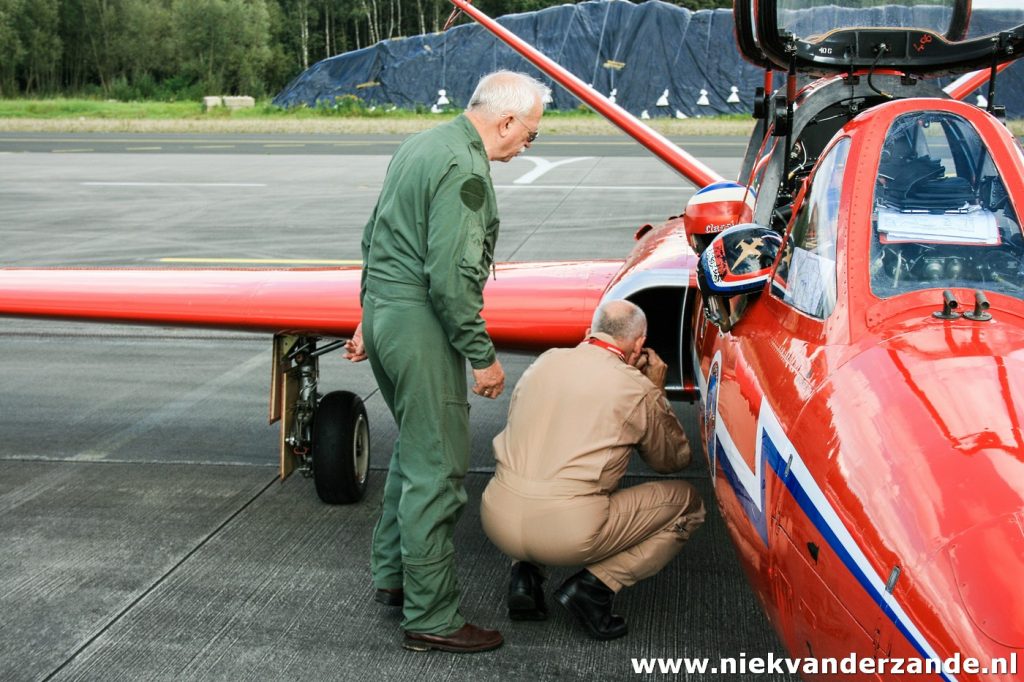
When preparing to depart from Twente Airport in the afternoon, the jet did not want to start up, even after several attempts. Since the saying “Better safe than sorry” particularly applies to aviation, Fons and Gerhard decided to abandon the attempts and park the Fouga in Hangar 9 (a former F-16 hangar) and return at later stage with the technicians. On Friday the 15th of September the Fouga could return to Lelystad after a faulty fuel-micro-pump was replaced.
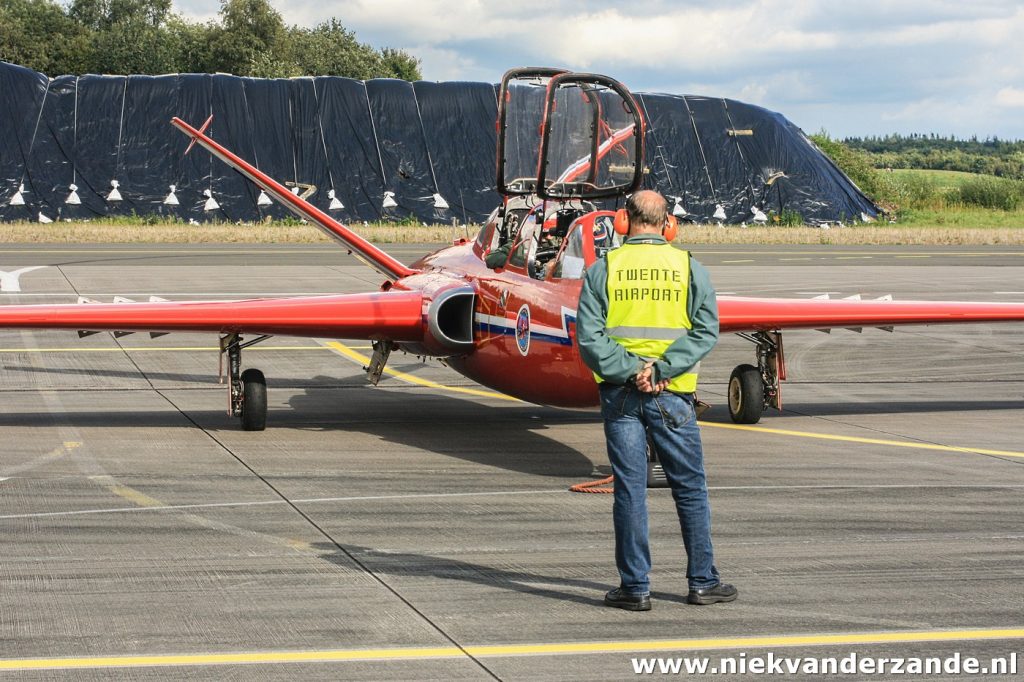
Acknowledgements: I want to thank Fons Hemmelder and Gerhard Westerdijk for their time and the really nice conversations and explanation.

